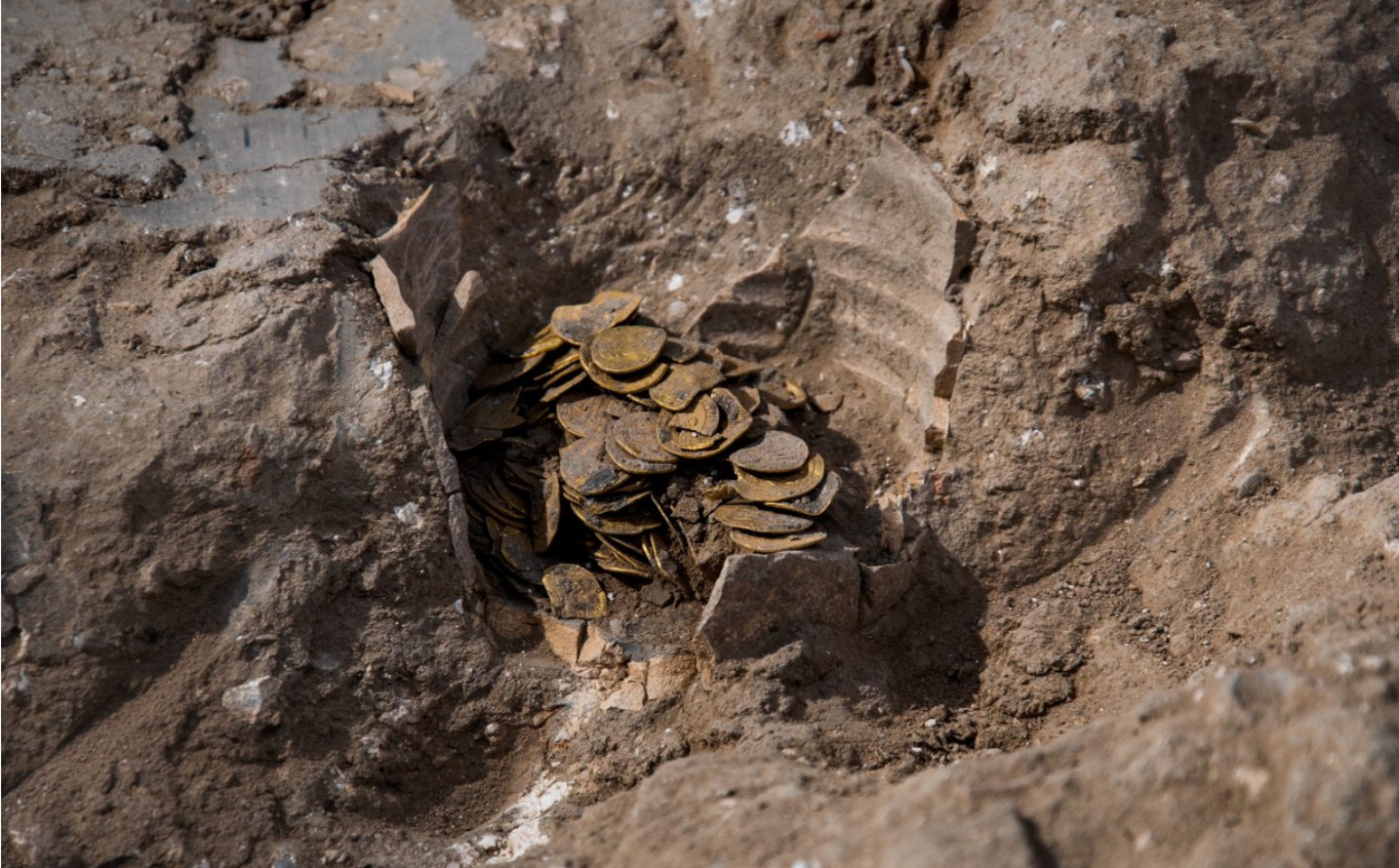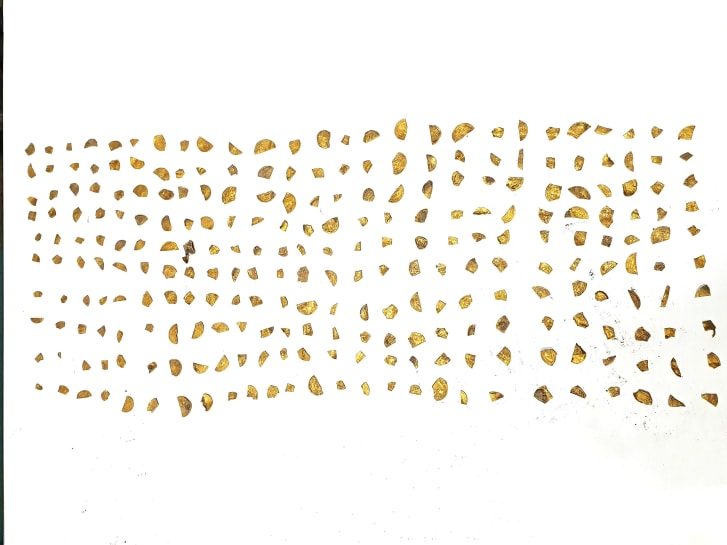
Every summer, the Israel Antiquities Authority (IAA) invites teenage volunteers to work alongside archeologists at one of several dig sites across the country. The program, designed to provide the youth with an authentic archeology experience and to help them connect with Israel's history, usually results in the discovery of ancient tools or pottery. However, two teenagers at an excavation site in Yavneh, south of Tel Aviv, struck gold — literally— when they unearthed a clay jar filled with gold coins on August 18, 2020.
"I dug in the ground and, when I excavated the soil, saw what looked like very thin leaves," said Oz Cohen, one of the teenagers. "When I looked again, I saw these were gold coins. It was really exciting to find such a special and ancient treasure."

The 24-carat pure gold treasure dates back 1,100 years to the Abbasid Caliphate, a Muslim dynasty that ruled over Persia and North Africa during the 9th century. The hoard of 425 coins includes full gold dinar coins, as well as 270 smaller fragments.
Robert Kool, a coin expert with the IAA, says cutting gold and silver coins to make small change became a common practice in Islamic countries during the 850s after the sudden disappearance of the more affordable bronze and copper coins. However, unique among the collection was a fragment of a gold solidus of the Byzantine emperor Theophilos (829 – 842 CE), minted in the empire's capital of Constantinople. Kool says the rare artifact, never before found in excavations in Israel, could be evidence of the trade and cultural exchange between the Byzantine Empire and the Abbasid Caliphate.

The large quantity of coins is also unusual. "Finding gold coins, certainly in such a considerable quantity, is extremely rare. We almost never find them in archeological excavations, given that gold has always been extremely valuable, melted down and reused from generation to generation," said IAA excavation directors Liat Nadav-Ziv and Elie Haddad.
While the archeologists are not sure why the owner carefully stashed away the valuable coins, they believe he/she fully expected to come back. "The person who buried this treasure 1,100 years ago must have expected to retrieve it and even secured the vessel with a nail so that it would not move. We can only guess what prevented him from returning to collect this treasure," they said.
The approximately two-pound gold cache, would, by weight alone, be worth about $50,000 today. While that is still substantial now it was a small fortune during the 9th century — one that would have afforded the owner a lavish lifestyle. "For example, with such a sum, a person could buy a luxurious house in one of the best neighborhoods in Fustat, the enormous wealthy capital of Egypt in those days," Kool said.
Resources: news.artnet.com, www.israel21c.org
